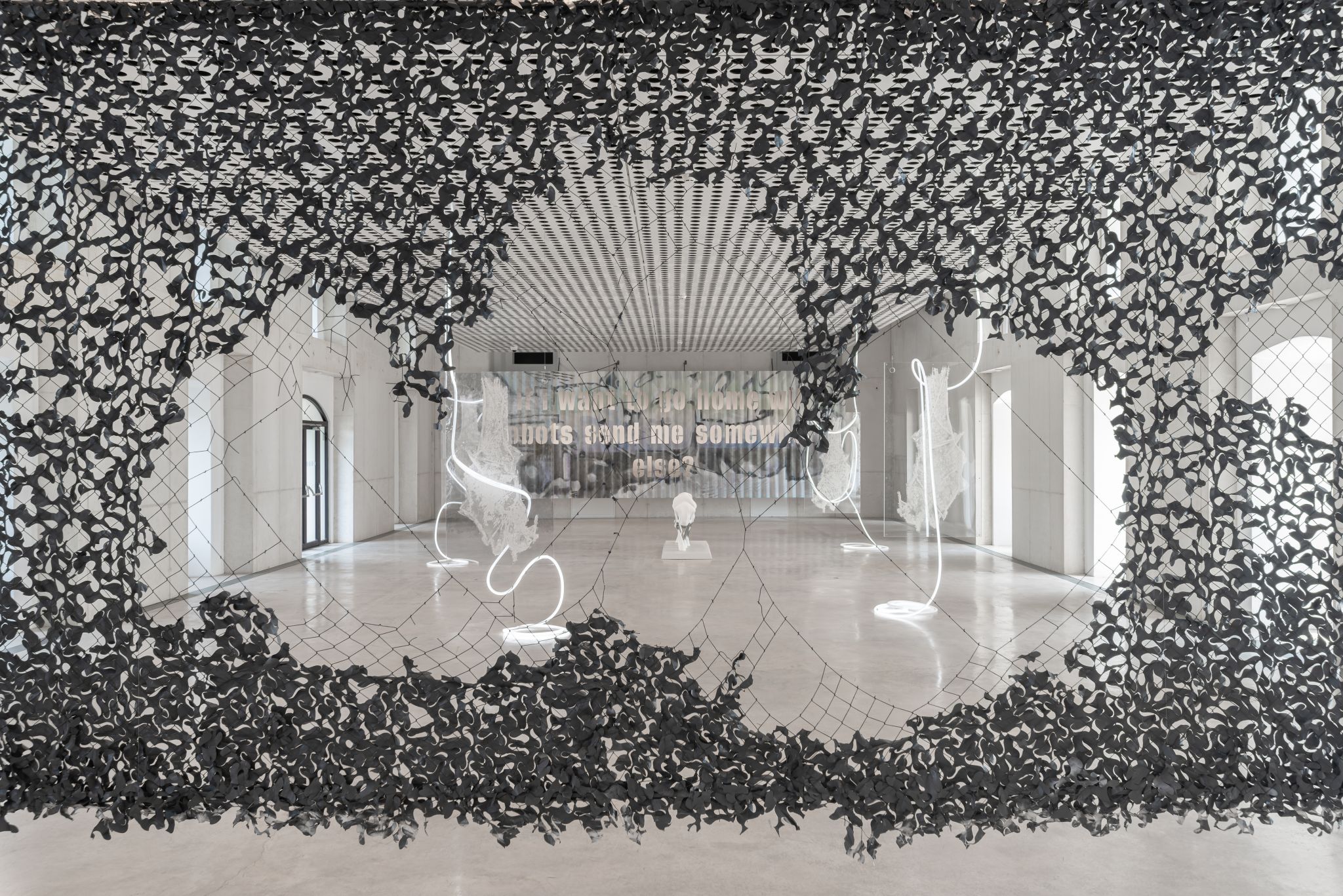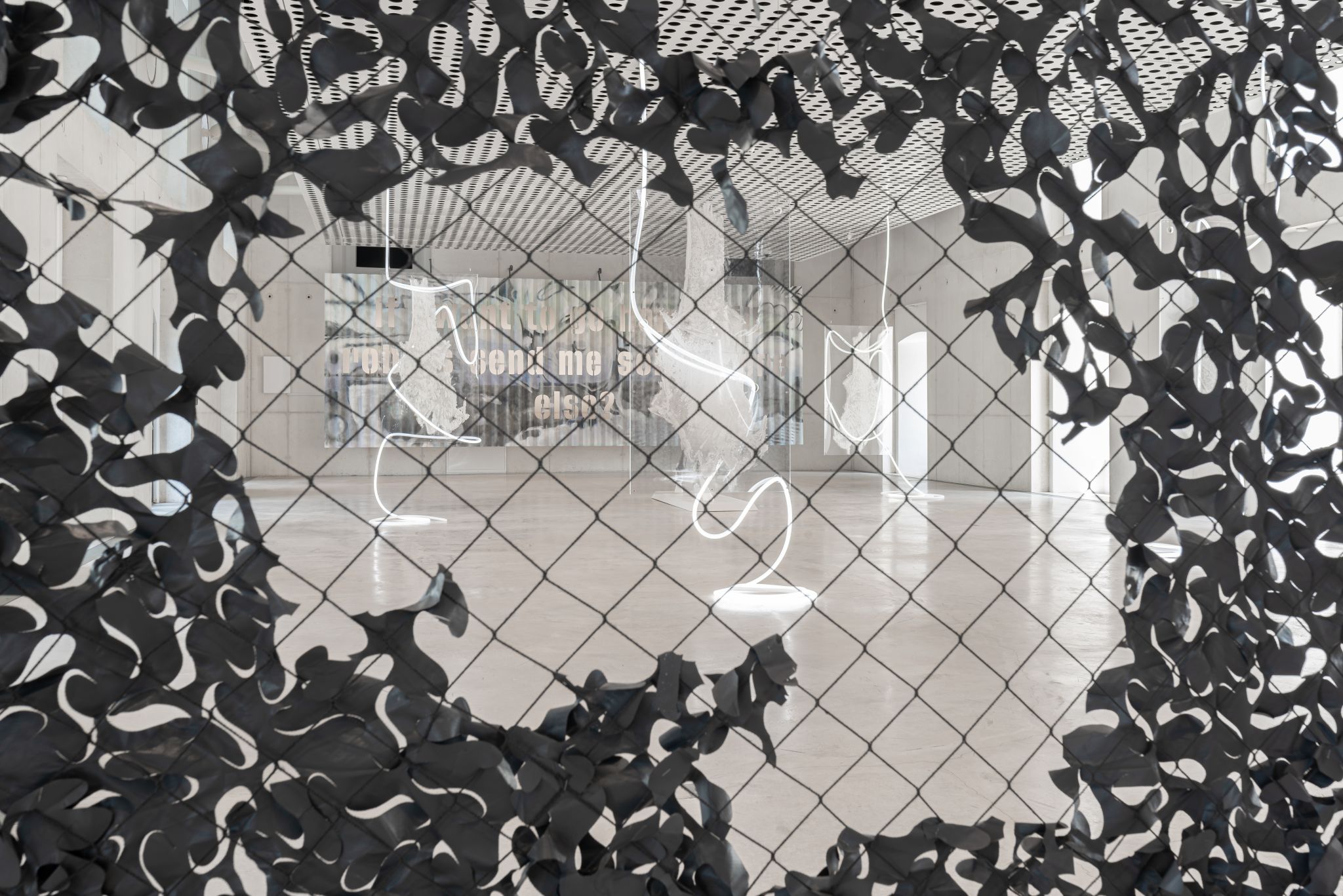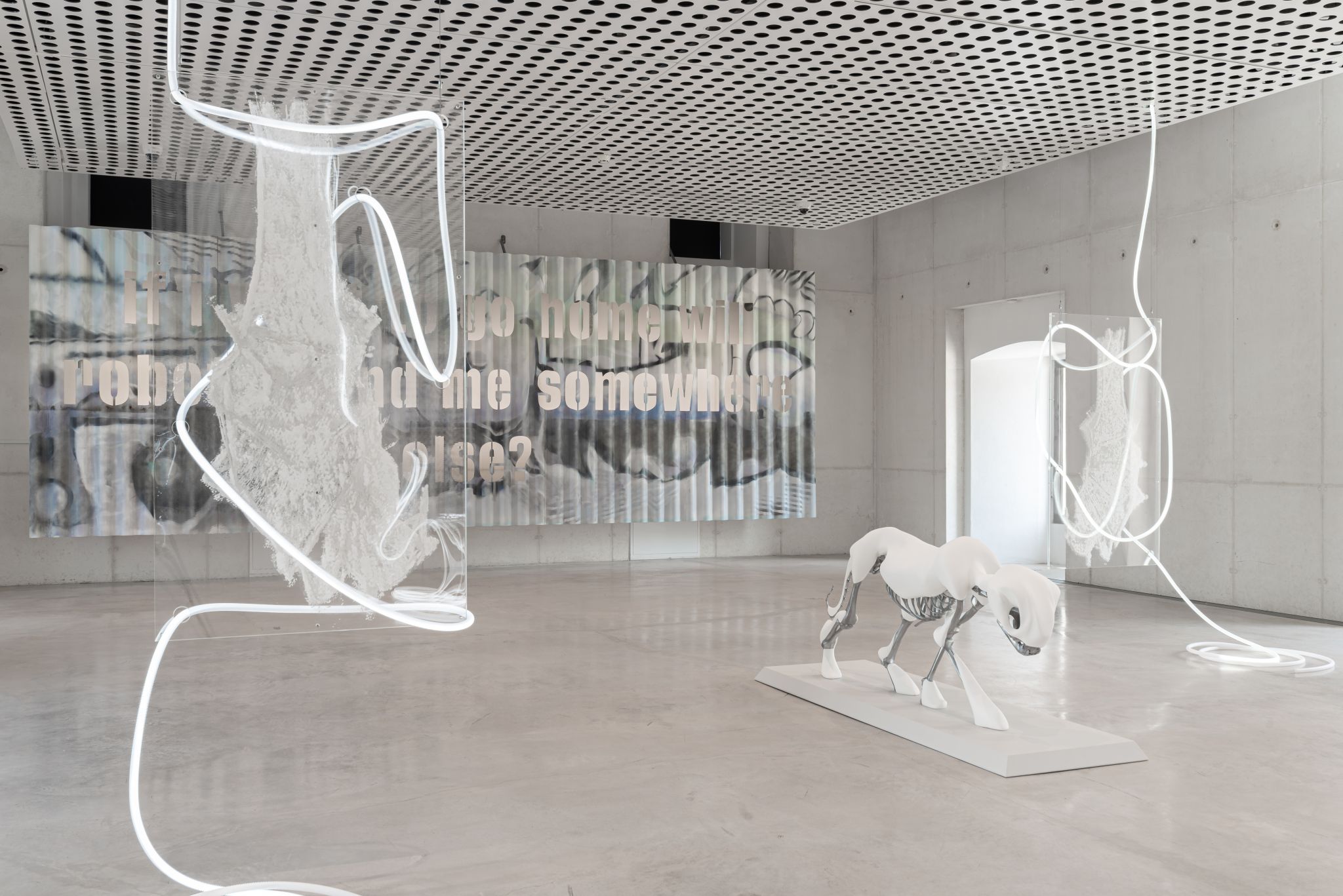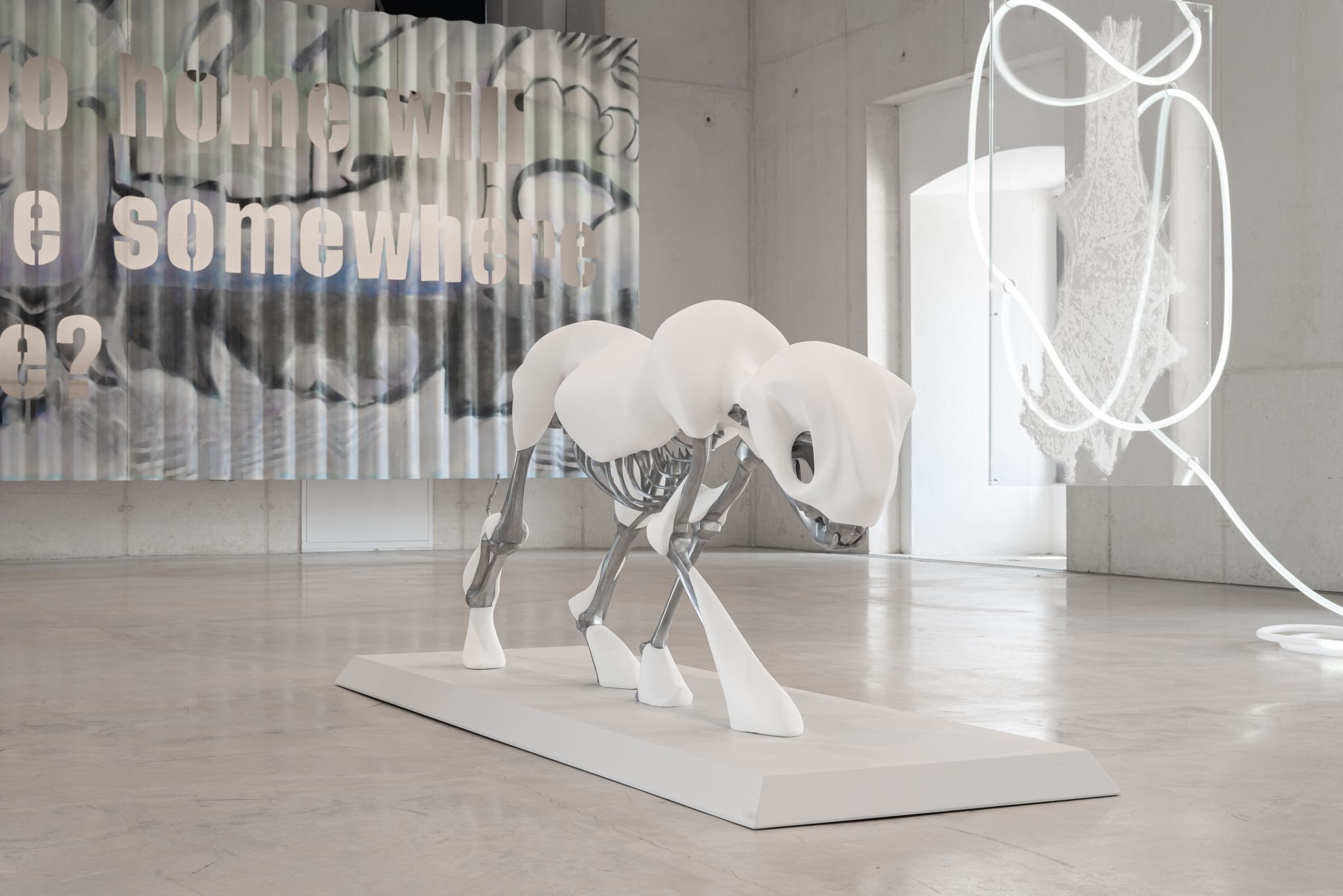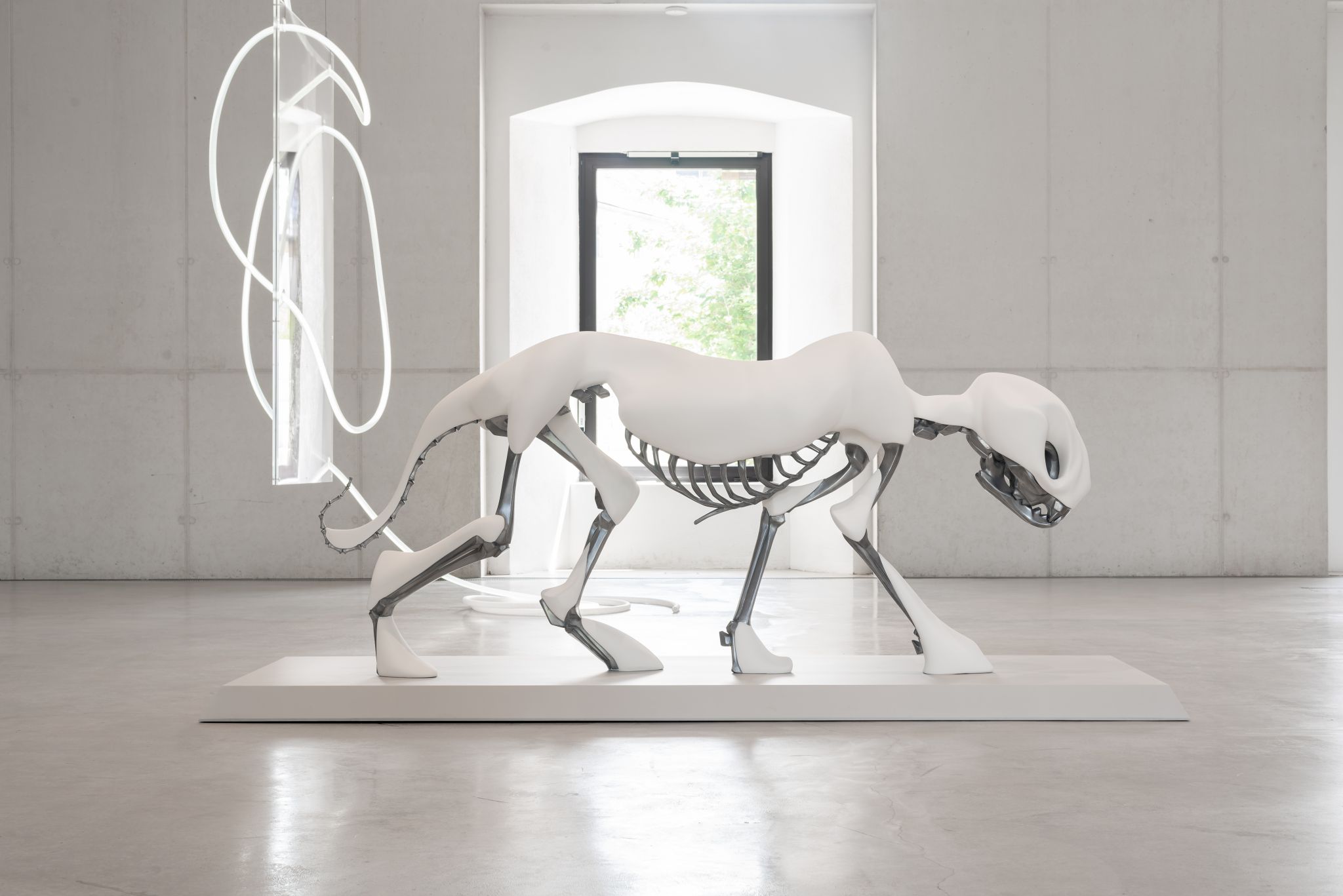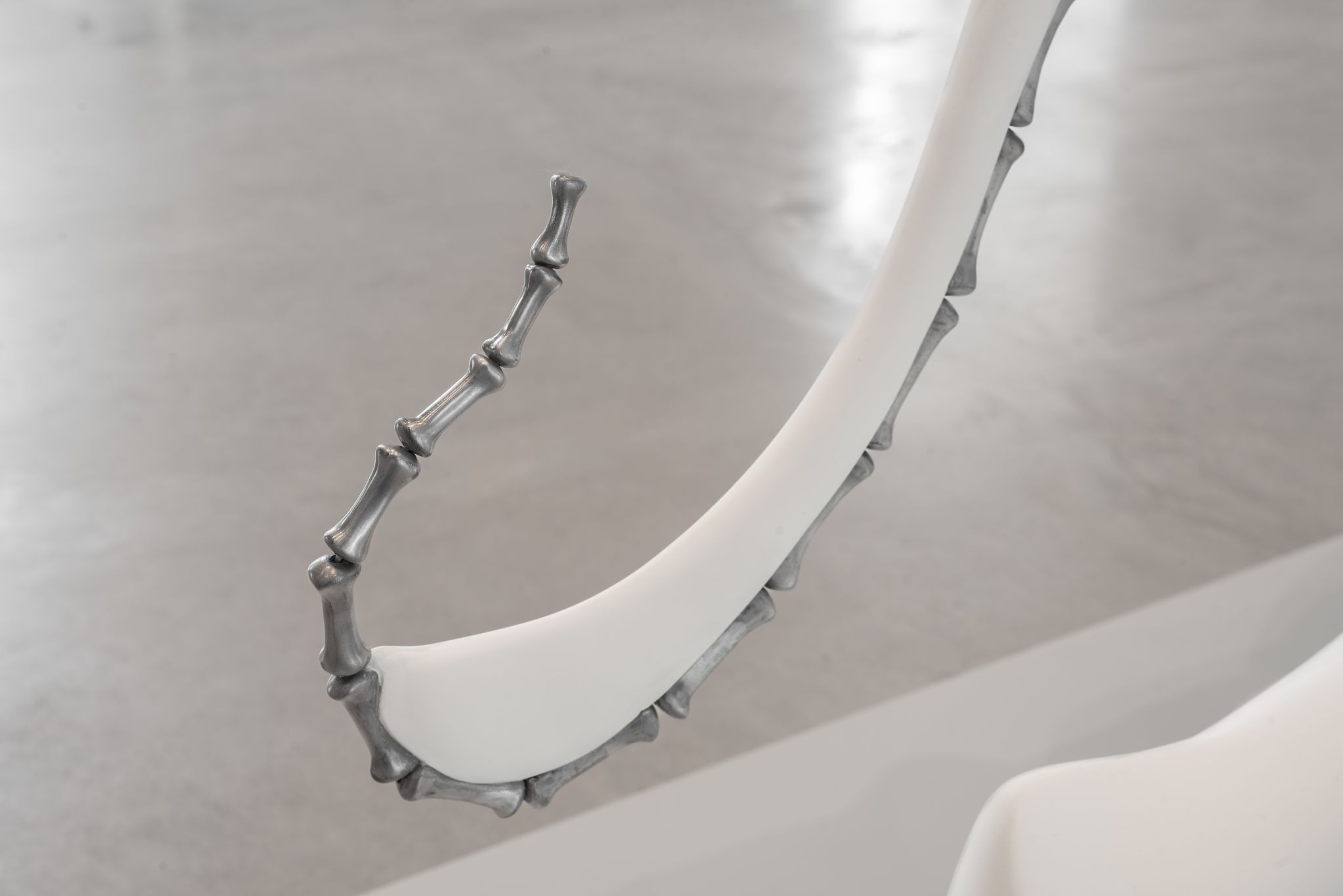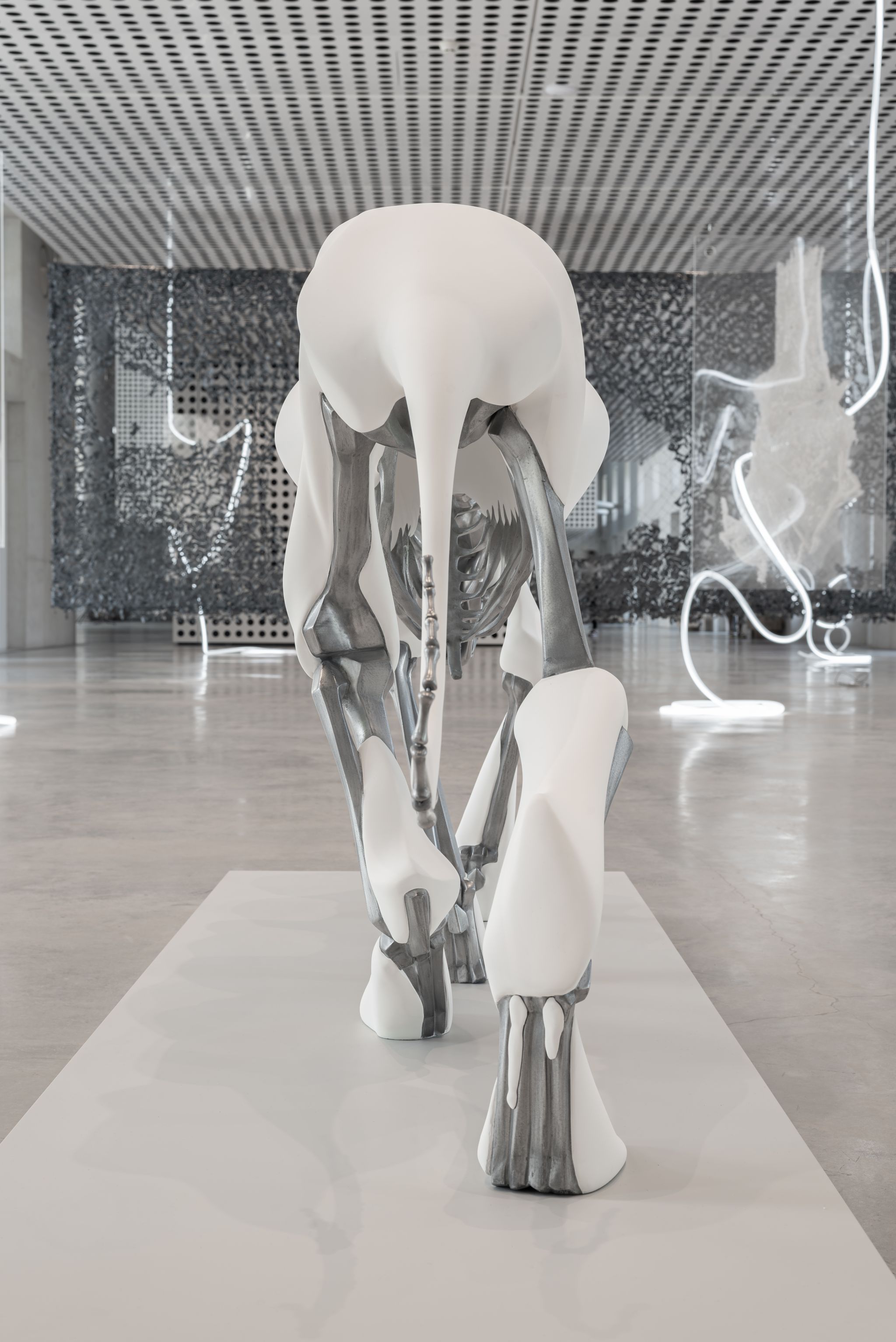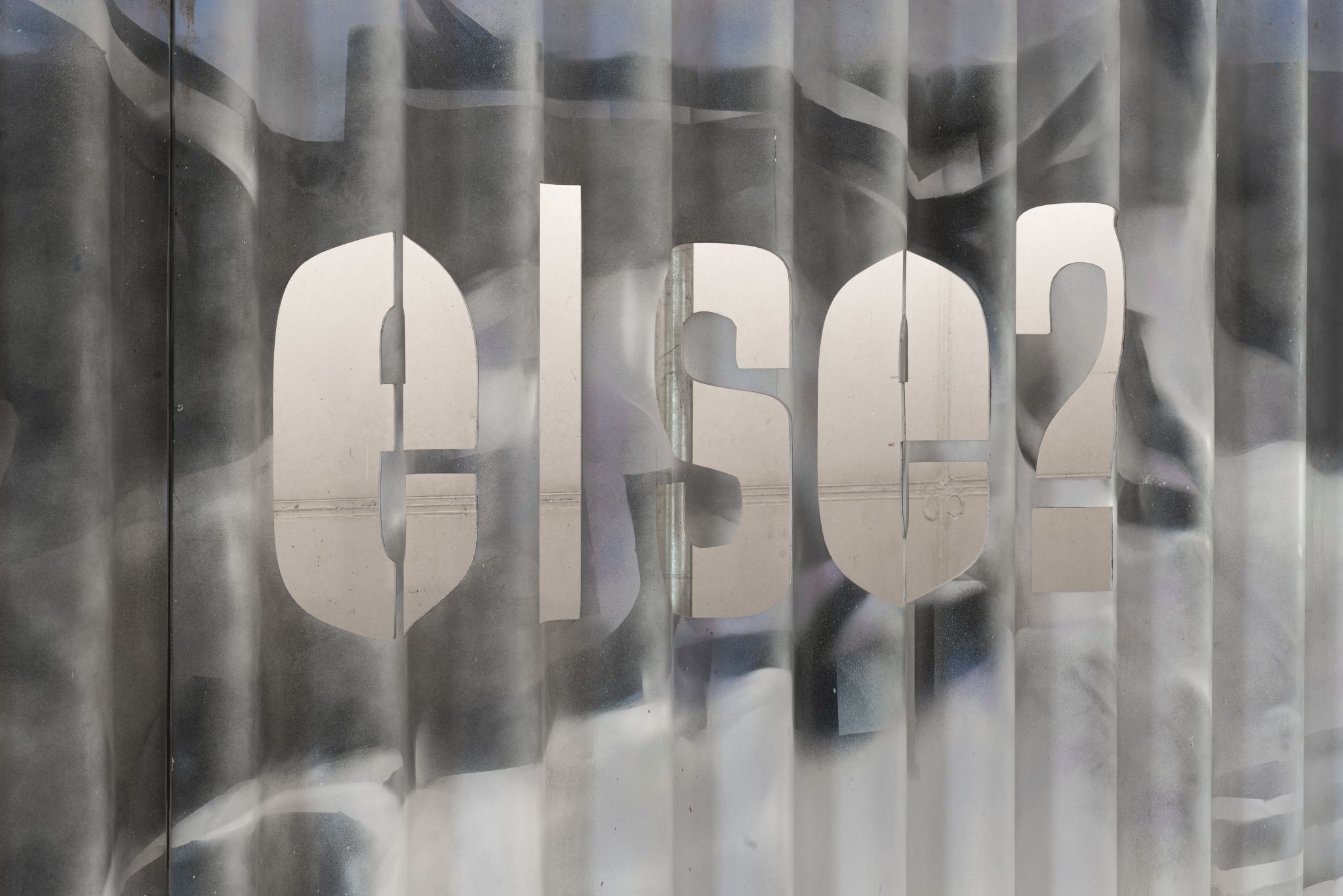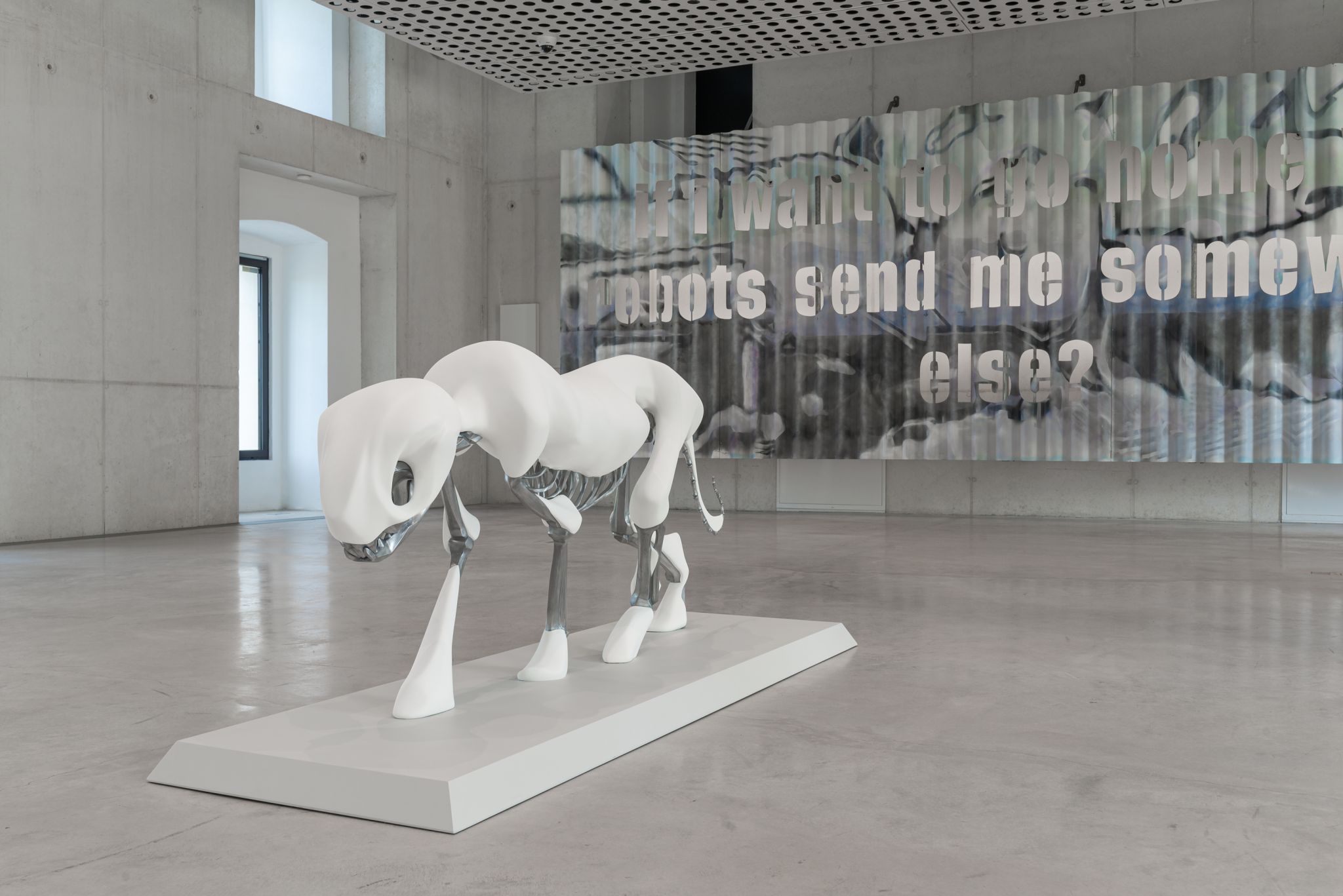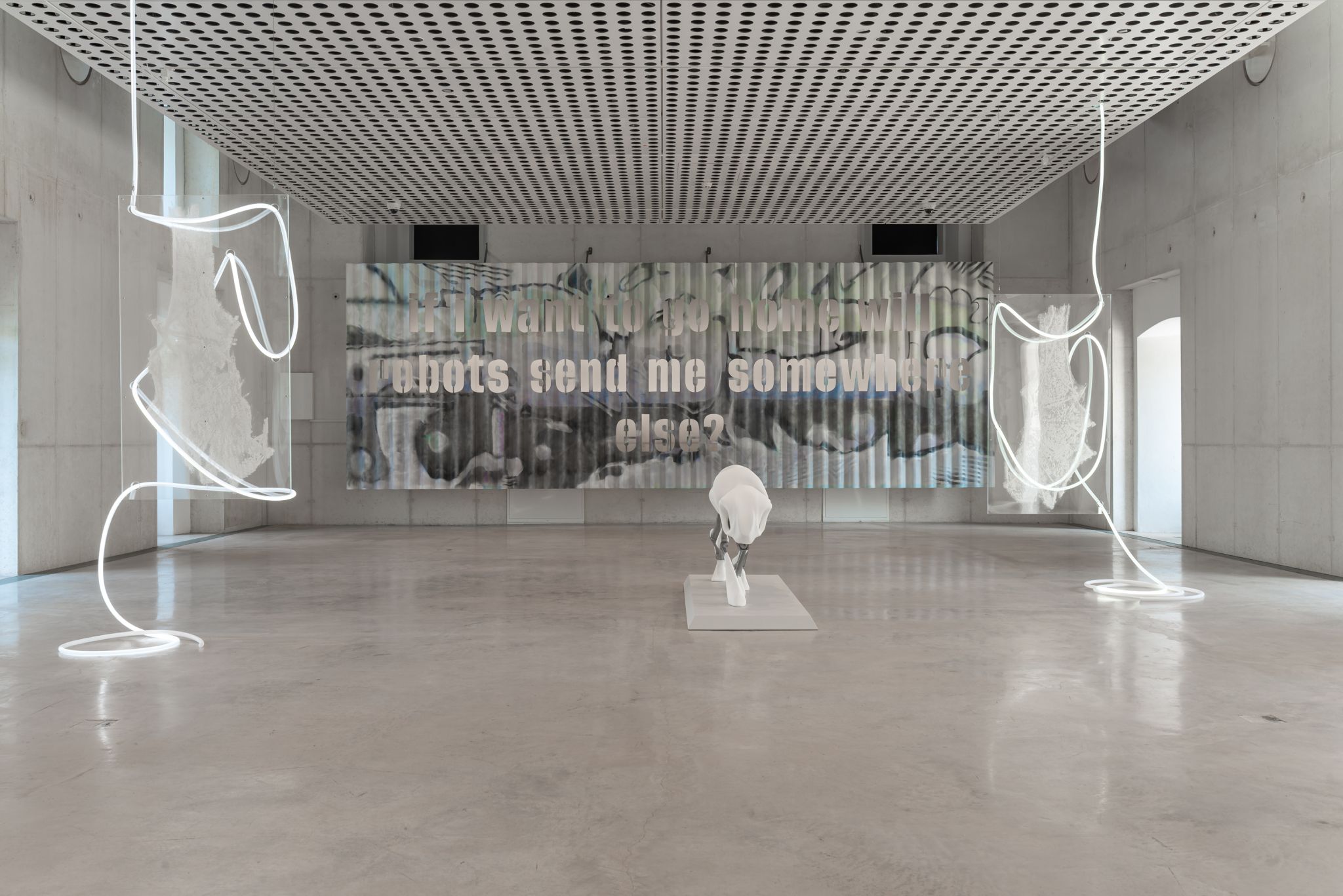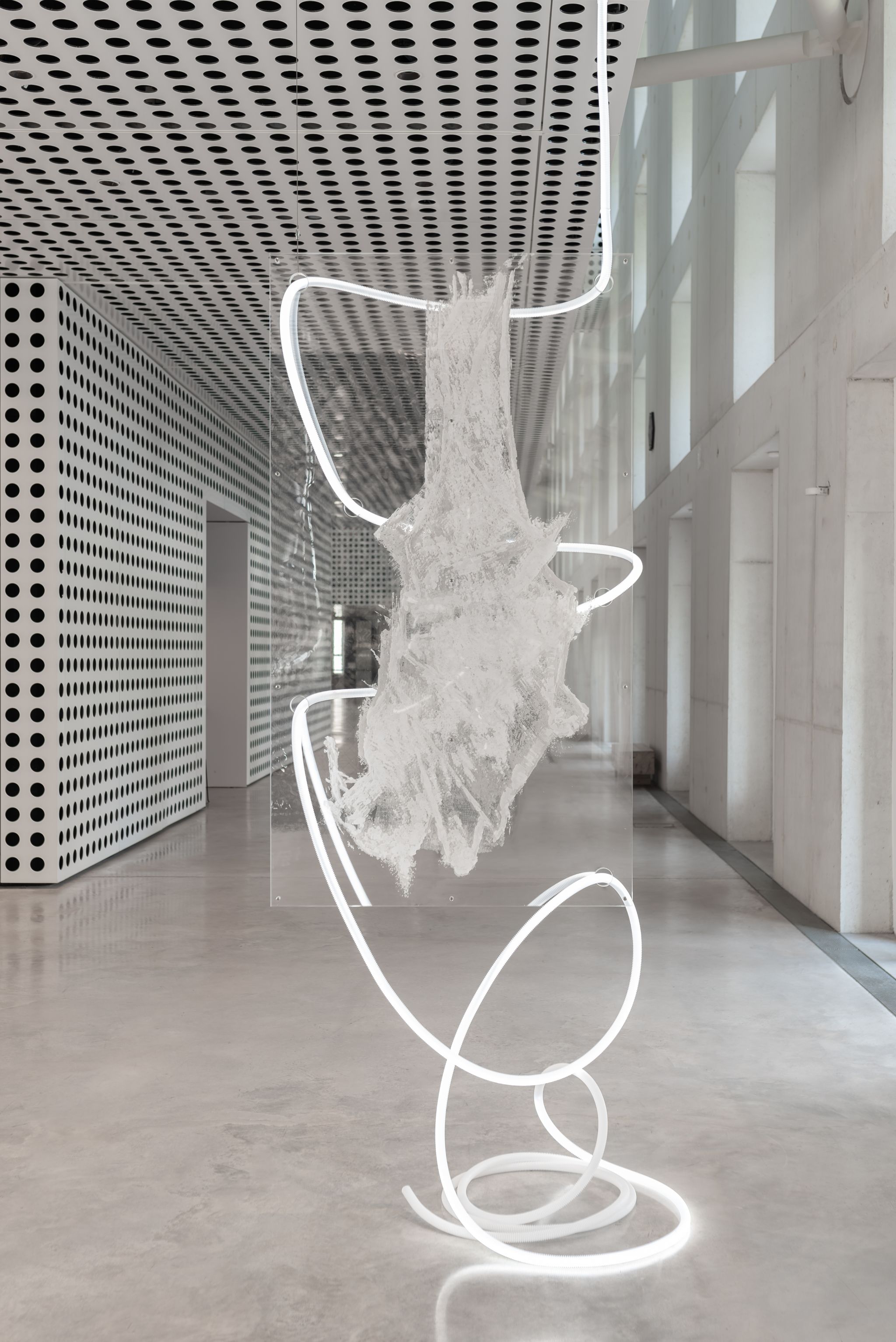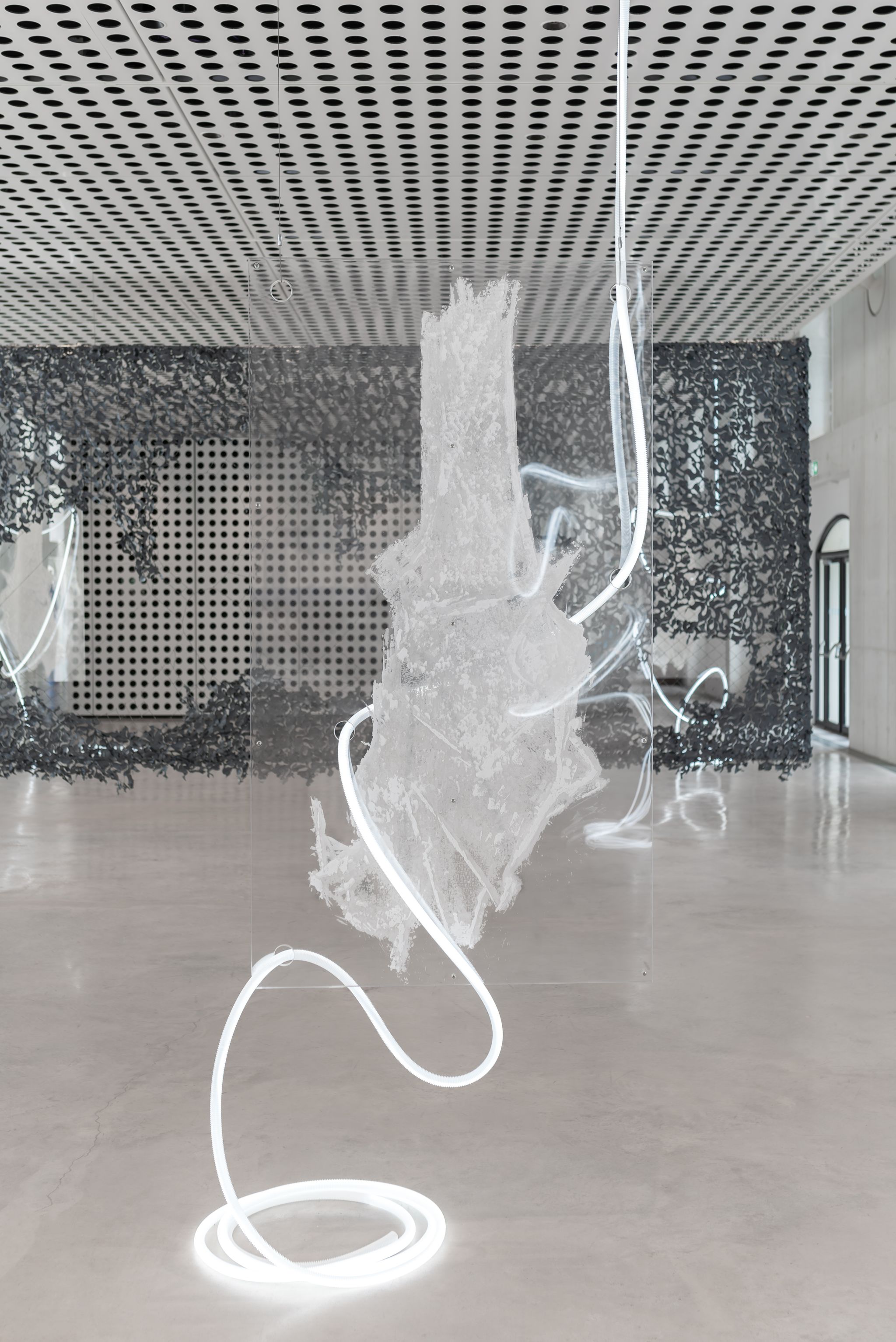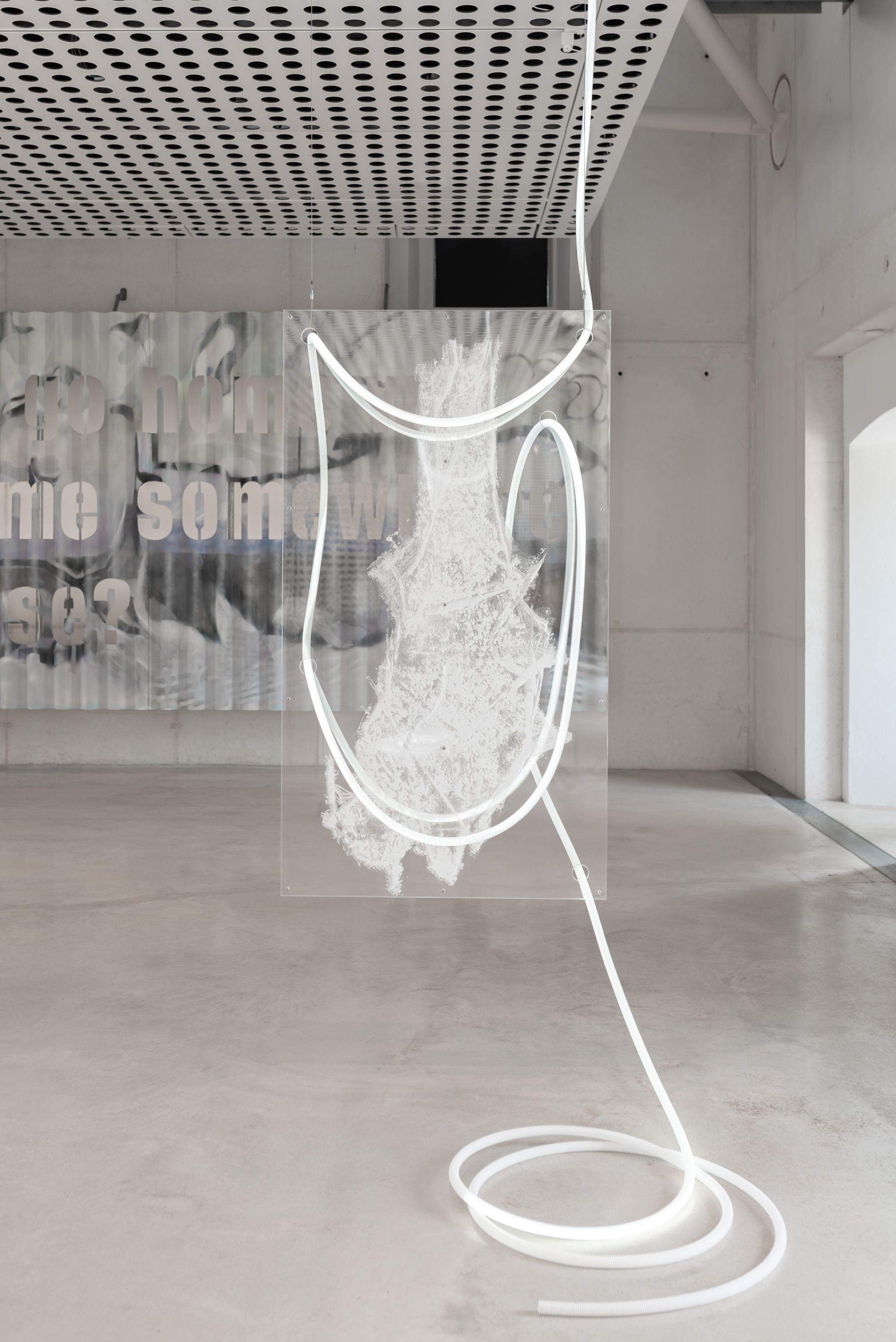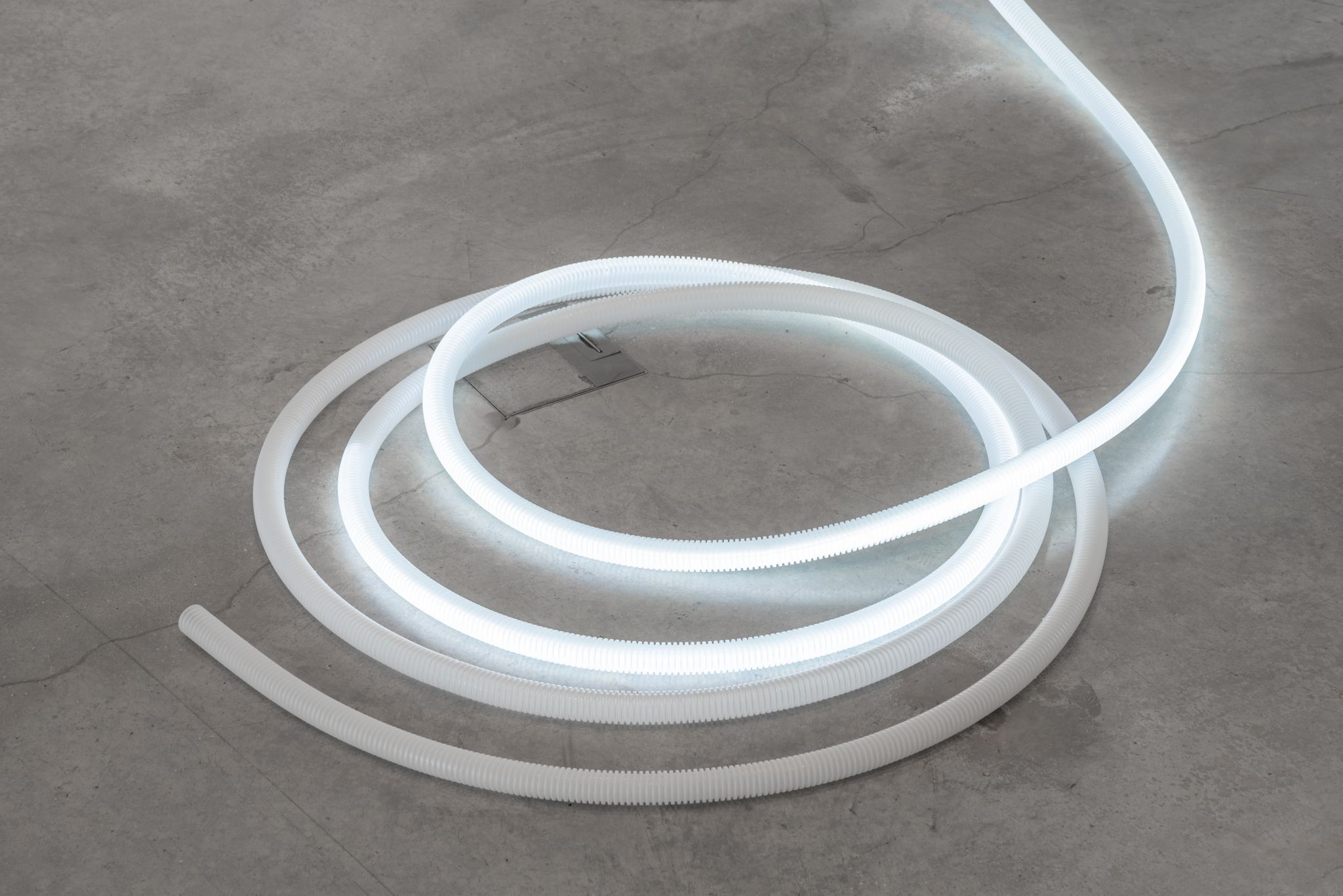I SHOUT, YOUR ECHOES BOUNCE, WHAT AM I? is an exhibition that brings together four works by the Kosovar artist Flaka Haliti, which she created between 2021 and 2023. Gathered on the ground floor of Cukrarna, they conjure a landscape of ambiguous creatures whose identity, function, and purpose reside in the in-between. Operating as aesthetic and linguistic enigmas or riddles, they inhabit a space that once functioned as a temporary home for people on the margins of society. Transcending time, Haliti addresses this spectral history with pertinent questions of belonging, taxonomy, identity, and the socio-political oppressions they entail.
read more
Both in a material and linguistic form, I SHOUT, YOUR ECHOES BOUNCE, WHAT AM I? proposes a riddle or an enigma as a counterstrategy to the stabilizing forces of apprehension, subjugation, and identity formation. It summons a space where something is neither this nor that, where meaning arises in and as the enmeshment with things other than oneself. Drawing on a longstanding practice that revolves around the questioning of the principles of capture – of an image, of a nation, of identity – Haliti proposes a constellation of works that are rooted in playful indeterminacy and veiled subjecthood/meaning. Together, they set the scene for echology: a means of navigating oneself by way of porosity, by way of frequencies above human hearing, where one body is always already another.
Hanging from the ceiling, the newly commissioned I SHOUT, YOUR ECHOES BOUNCE, WHAT AM I? (2023) arranges 6 hybrid figures. Unreducible to their discrete elements, the Plexiglass formations merge suggestively layered depictions of bats which are literally perforated and entangled by a snakelike string of light. While the bat and the snake usually have asymmetrical roles as prey and predator, they, in this case, collide into a composite being. Haliti considers these opposing forces as mutually constitutive, without being reducible to a static core or image. In this way, the title’s linguistic enigma comes into play materially: the navigational tool of these sightless nocturnal creatures, known as echolocation, becomes a vehicle for reflecting on the position one takes or holds, and reveals how this position is always already constituted by what surrounds one.
Furthering the reflection on hybridity and non-fixity, Whose Bones (2022–) presents an instalment of Haliti’s series of sculptures that present skeletons of undeterminable animals. A 3D-printed bone structure of what could be both a plebeian stray cat or a dignified panther confounds the relation between appearance and the internal structure, between what is socio-politically rendered respectable or negligible. As such, Haliti taps into the long history of heraldry, in which animal and nation-state are representatively intertwined in the form of an emblem, flag, shield, or coat of arms. Covered in a layer of snow, a dystopic, archaeological temporality is induced, suggesting a reflection on what kind of structures will stand the test of time.
I SHOUT... and Whose Bones are visually connected by Unknown (2023), a spatial intervention in the form of a military net suspended in space. Simultaneously covering and revealing, blocking and allowing vision, the net introduces tension into the space and between its actors. In keeping with one of the main threads of Haliti's work, in which she reuses and recontextualizes military tropes and remnants, the strategic tool used for military camouflage is stripped of its purpose, demilitarized, thus entering a play with other spatial elements. Rather than being treated as a work in itself, the net serves as an undefined entity, a prop for the sake of suspense, a prop that distorts the clarity of vision and thus serves the plot.
Hanging on the back wall, If I Want to Go Home Will Robots Send Me Somewhere Else? (2021) poses another question as regards the dwelling of subjectivity and conflicting forms of belonging. Derived from a “true or false” question on an online platform called “#rumors about Germany – facts for migrants,” Haliti, who lives in Germany, twisted the original question, replacing “Germany” with “robots” and “you” with “I/me.” The metal plates fuse associations of both shipping containers and roofing material, contrasting a sense of sedentariness with (forced) mobility.
Curated by Alenka Gregorič
Text: Cukrarna Gallery
Photos: Blaž Gutman / MGML
